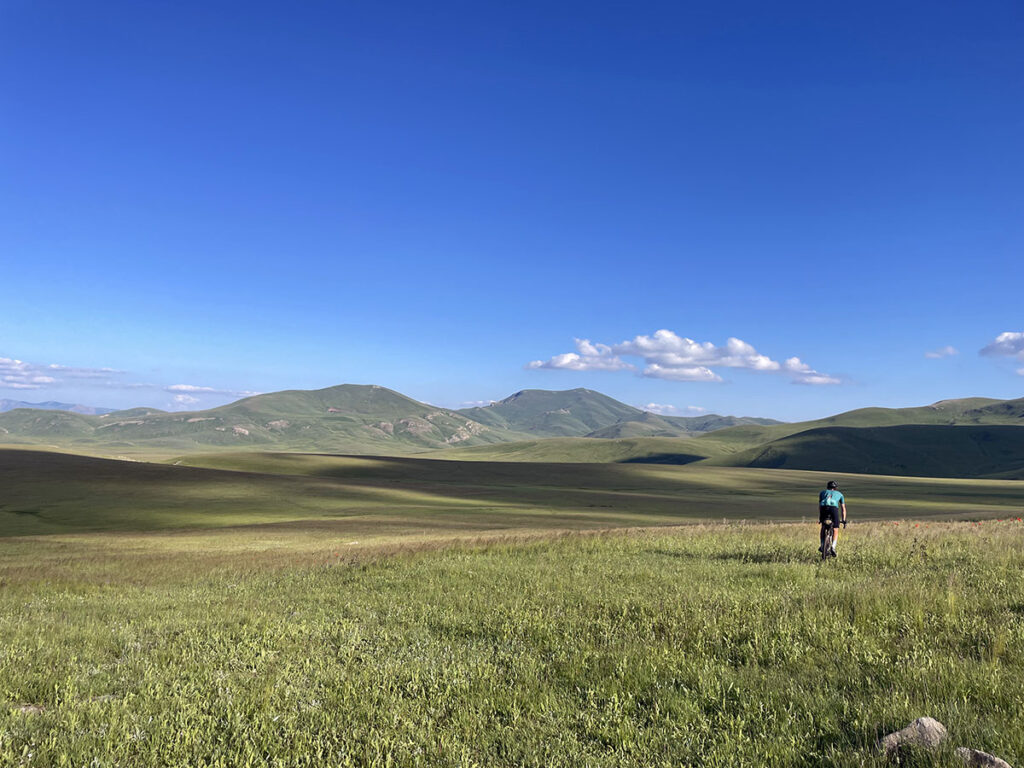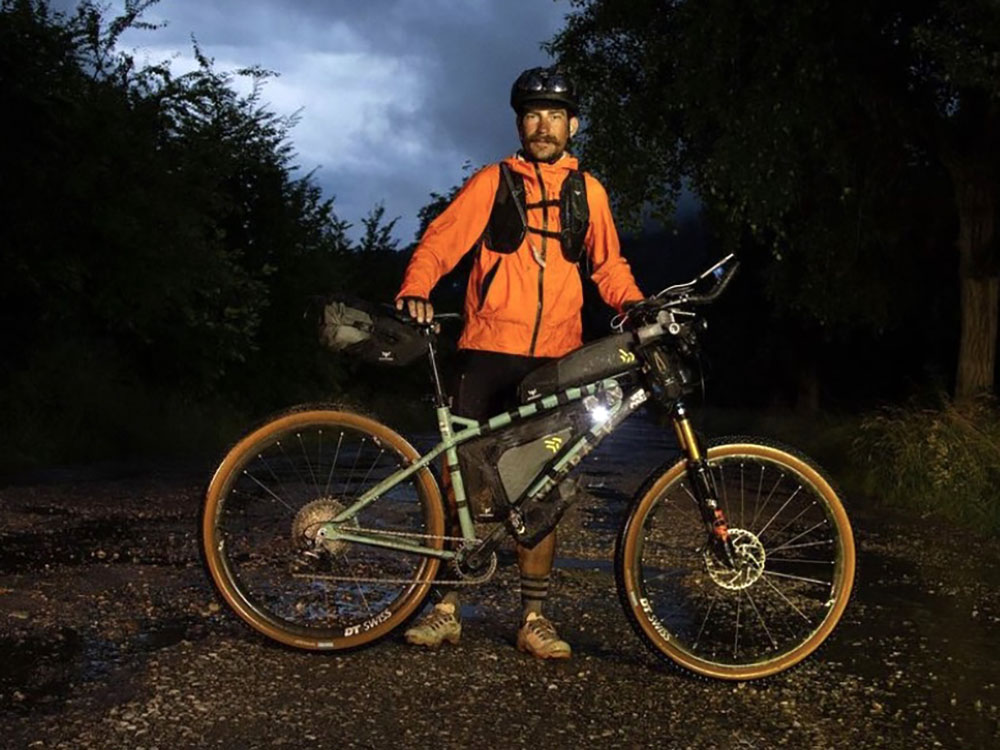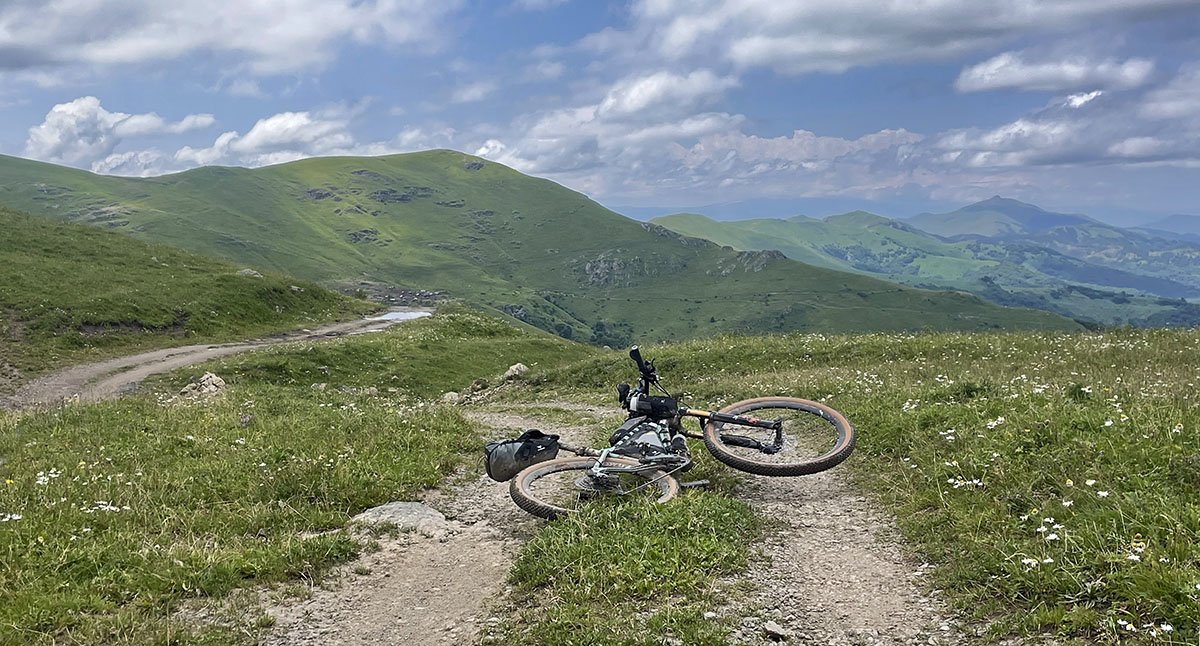Adrien Liechti: Ascend Armenia wasn’t just about cyling
Adrien Liechti is one of the world’s fastest ultra-distance racers. Recently, he won Ascend Armenia, a new race on the calendar that took riders far off the beaten path in this relatively unknown eastern European country. After the race, I caught up with Adrien to talk about the race.
Jan: Congratulations on winning the Ascend Armenia. This was the first time this race was organized. How was it?
Adrien: Thank you! Yes, I winning the inaugural edition of Ascend Armenia was a big goal for me, so I’m very happy. It’s always special to ride the first edition of a race, because there are no reference points from previous riders. You ride into the unknown, in a country about which we know only very little. It was an adventure, and I love that!
Jan: What were some of the highlights of the race?
Adrien: One very special moment was the long climb after Alaverdi, at km 748. I arrived on the fourth day of the race in this village. It was about 11 a.m., and I started climbing this 25 km climb, with many stretches that were steeper than 20%. It was very hot, about 38°C, and there was practically no shade. I arrived at the top four hours later. The course continued along the crest of the mountains. There were no trees, so I was very exposed to the wind. Only a few cows and horses were there. The view was incredible!
Jan: What was the biggest challenge?
Adrien: The biggest challenge were the muddy conditions after Lake Arpi and especially after Checkpoint 4. There had been some big thunderstorms, and the mud was very sticky. It wasn’t easy to keep moving. I was happy that my frame has a lot of tire clearance, and that I had experience with mud from the Tour Divide.

Jan: You said earlier that “It wasn’t just about cycling, and I love that!”…
Adrien: As I said, it was an adventure. You had to ride the bike, but you also had to figure out the weather conditions, predict when heavy rain would fall, figure out when shops would be open (Armenians get up late), find water sources, and especially find car washes along the course to clean the bike and keep it in rideable condition. All this has to be prepared before the race. That’s why I rode from Tbilisi (Georgia) to the start of the race, so I could immerse myself in the Armenian culture. On the other hand, you have to be flexible and not make too many plans. A bikepacking race is really just a fast tour.
Jan: Most of us aren’t really familiar with Armenia as a cycling destination. What is it like to ride there?
Adrien: It’s a wonderful country, extremely mountainous, with many lakes. The locals are very friendly and helpful. Tourism consists mostly of hiking, and the few foreign cyclists who visit generally stay on paved roads. During the race, we rode a lot on doubletrack used by locals in four-wheel-drive trucks. Those paths can be very steep, both uphill and down! An important aspect of the race are the huge sheepdogs who can be ferocious when defending their herds of sheep. It could be pretty scary when I encountered them, but fortunately everything went without incident during the race.

Jan: Can you tell us a little about your bike?
Adrien: I used my Bombtrack Cale AL. It’s a Trail hardtail, relatively long and comfortable. It’s very stable when descending, and the fork, with 120 mm travel, allows me to relax while riding fast. It’s very different from a Cross-Country mountain bike, which is shorter and more nimble. The combination of Trail frame and lightweight parts is perfect for me for long off-road bikepacking races. Comfort = speed. And it’s a lot of fun to ride.
Jan: You ran Rene Herse Fleecer Ridge dual-purpose knobbies that are designed for gravel and pavement, but not for serious mountain biking…
Adrien: I ran the Endurance version of the Fleecer Ridges. You are right, these aren’t mountain bike tires with huge knobs. And yet they are plenty sturdy to take on such a race, and they really performed well in all situations. They have very low rolling resistance, which is useful on the faster sections. On the uphills, they roll fast and grip well. I didn’t have any trouble on the descents, either. I felt very secure. I found that it’s important to ride at low pressures to use the entire surface of the tire and get more grip that way. I didn’t have a single flat, and I didn’t pump up my tires during the 1,160 km of the race. I trust these tires, and that’s pretty rare for me. [Editor’s note: Adrien gets free tires from Rene Herse Cycles, but there is no paid sponsorship.]

Jan: This year, you’ve already won the Hellenic Mountain Race in Greece and now Ascend Armenia. What’s next on your schedule?
Adrien : For me, the next race is the Silk Road Mountain Race in August in Kyrgyzstan. It’ll be the second time I ride it. (I finished third in 2021.) It’ll be a great race to follow, with many experienced bikepackers at the start. I can’t wait to be there!
Jan: Good luck for the Silk Road Mountain Race. I’m sure you’ll have fun!
Adrien: Thank you!



